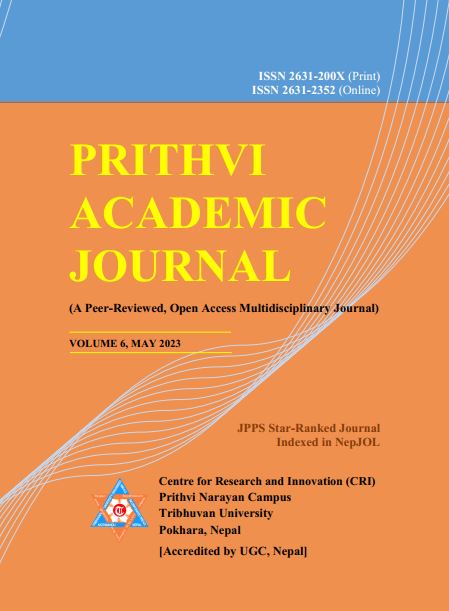The Language of Translation as an Ironic Strategy in R.K. Narayan’s Novels
DOI:
https://doi.org/10.3126/paj.v6i1.54668Keywords:
Global English readership, translation theory, irony, LeelaAbstract
Early practitioners of the novel in India could not count on a publishing industry, nor on any vast readership, and could only hope to be published overseas. However, writing for an international readership required some compromise between Indian forms and beliefs on the one hand, and the publishers’ expectations on the other. This dilemma asserted itself primarily with the language: what kind of English, if at all, should an Indian novelist employ? Furthermore, what kind of Weltanschauung could he rely upon to build the ethical framework of the novel? While Raja Rao chose for his Kanthapura a highly stylised English, which does not mimic any spoken variety, Narayan elected a simpler style, apparently unproblematic, but likewise non-mimetic. Both strategies are devised to be accepted by a global English readership, which would remain oblivious to the underlying “translation effect” and the Hindu world picture. With reference to his most renowned novel The Guide, this paper argues that the author was consciously moving in a space shared between India and the West. He offered a hilarious mirror of Indian life to South Asian readers while pretending to be speaking to an international audience like a kind of entertaining native informant. His widely appreciated ironical detachment can be interpreted in two ways: on the one hand, it looks like a modernist device à la Chekov; on the other, it mirrors the detachment of the ascetic who has come to recognise the futility of Maya’s world. Writing is therefore a form of Leela, an earthly version of the divine play, which a wise author and reader cannot take too seriously.
Downloads
Downloads
Published
How to Cite
Issue
Section
License
Copyright (c) 2023 Authors and Centre for Research and Innovation (CRI)

This work is licensed under a Creative Commons Attribution 4.0 International License.




